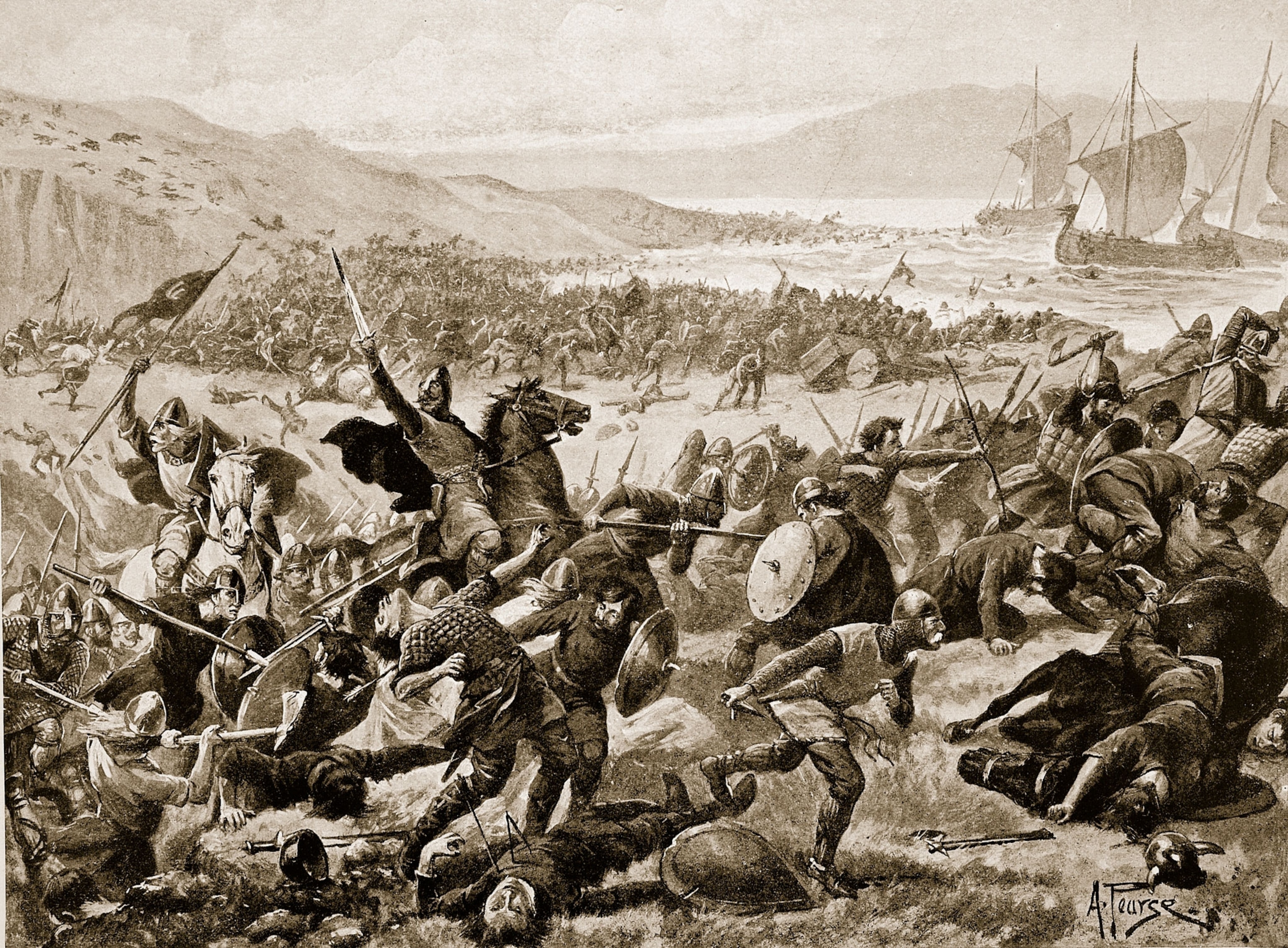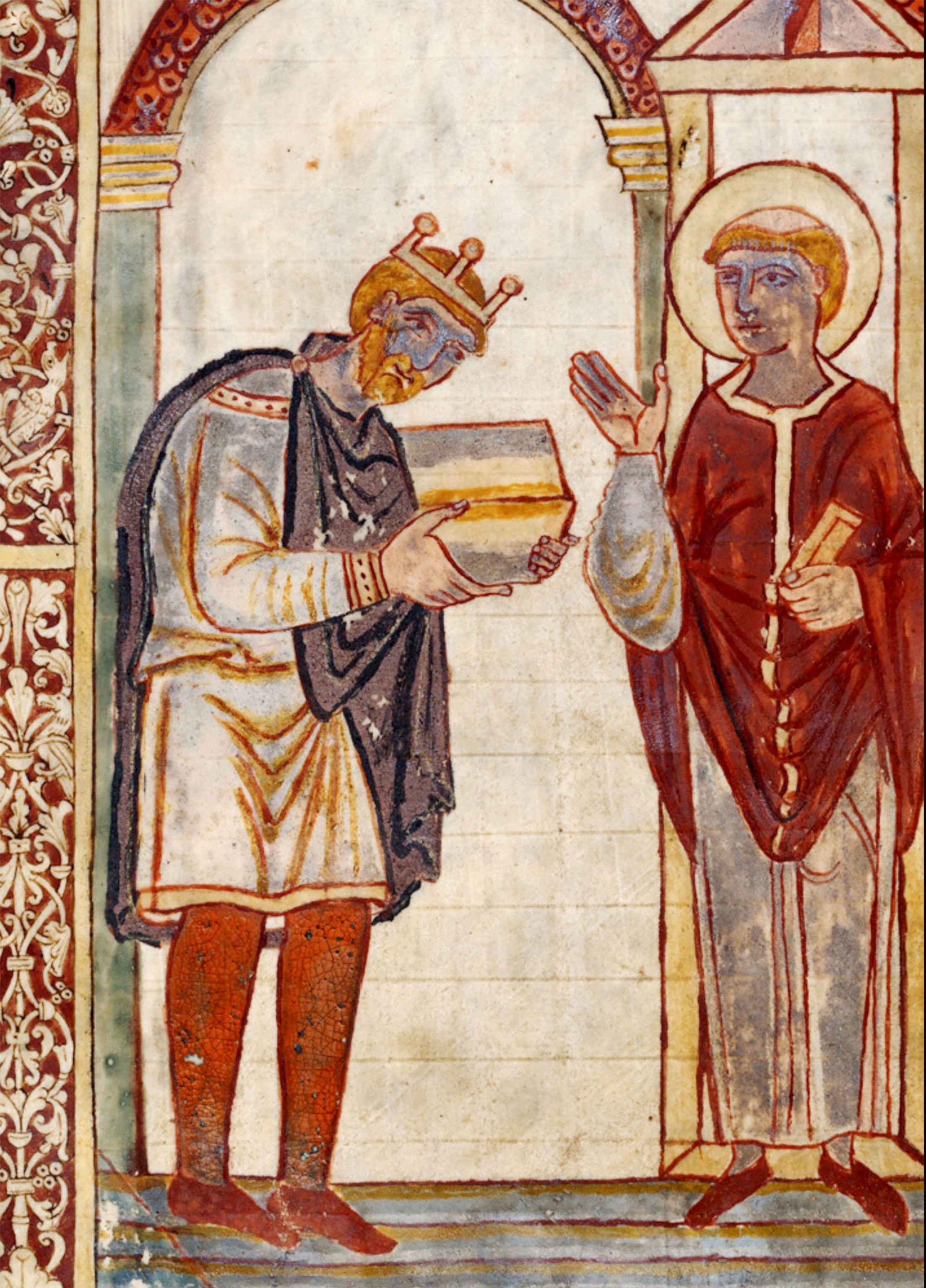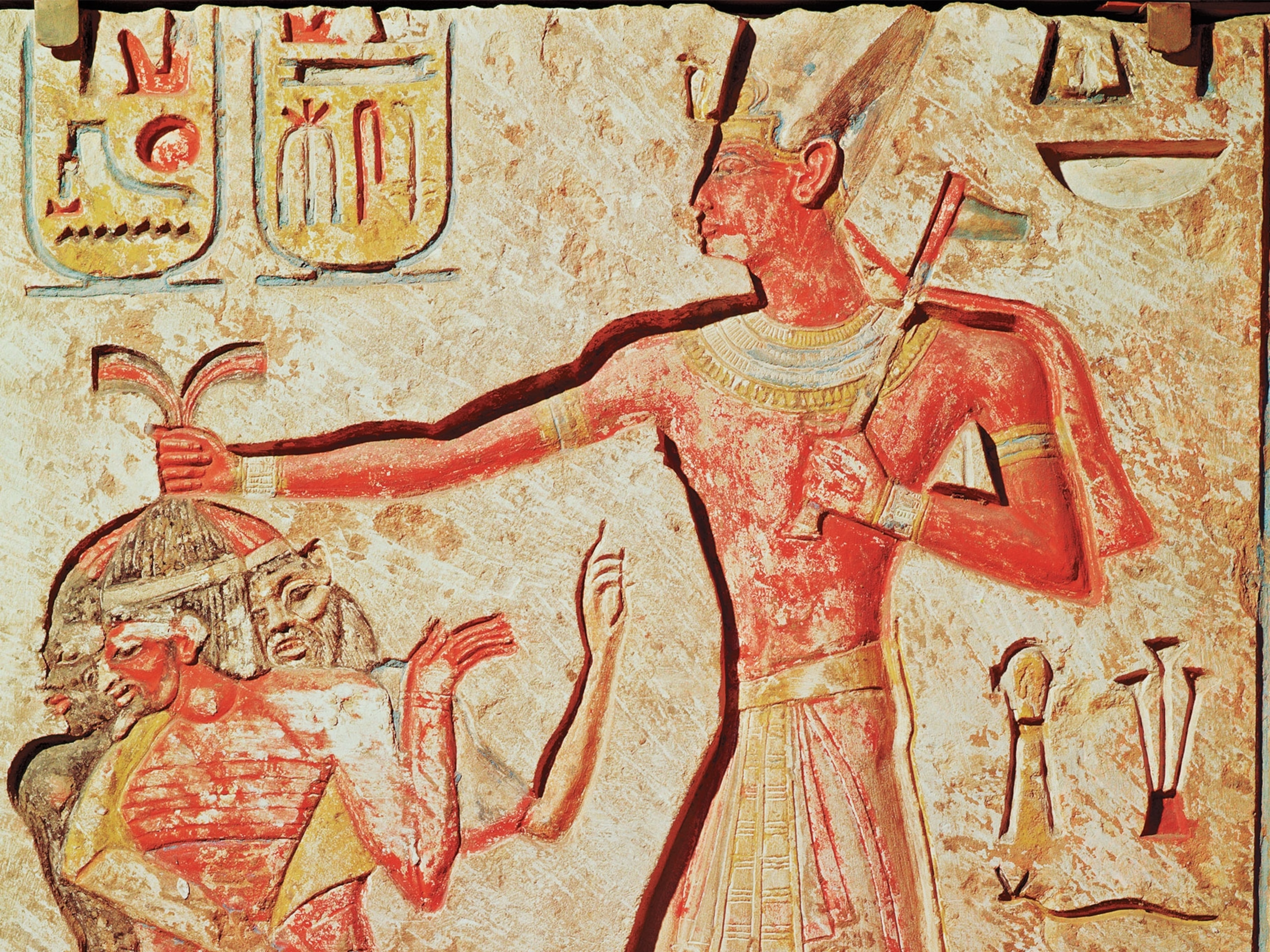
England was born on this battlefield. Why can’t historians find it?
When the Battle of Brunanburh was over in 937, five kings, seven earls, and “an uncountable army” were said to have died—yet there is little trace of where it all happened.
What was the most important battle in English history? If you answered the Battle of Hastings, the 1066 A.D. conflict in which the Normans successfully took over the English crown, you’re not alone. But there’s another compelling contender for that title.
More than a hundred years earlier, the Anglo-Saxons scored a definitive victory in a battle that led to the creation of the nation of England itself. The 937 A.D. Battle of Brunanburh was known simply as “the great battle” in its day, but its particulars were largely forgotten in the centuries that followed—including where it was fought. Here’s what we know, what we are just learning, and what historians are still sorting out.
Who fought in the Battle of Brunanburh?
The Battle of Brunanburh occurred during a contentious era in a divided Great Britain. The island was occupied by three groups: the Earls of Northumberland, a group of Norse Viking aristocrats who lay claim to what is now Northern England; the Celts, who ruled much of what is now Scotland and Wales; and the Anglo-Saxons, an alliance of kingdoms with northern European and Roman-British roots that ruled the central and southern parts of the island.
The Anglo-Saxons had consolidated their kingdoms over time, and by 927 A.D. King Æthelstan of Wessex had taken over most of the island. His incursions into Scotland and Wales gave him an unprecedented amount of power. But opposition to his reign festered, particularly in the north and west. In 928 A.D., after Æthelstan and his allies invaded York, a Viking kingdom, Æthelstan’s neighbors began worrying he would attempt to take over Scotland and Wales, too.
(Was Æthelstan really the first king of England? The answer is complicated.)
Their worried were well founded: In 934 A.D., the Anglo-Saxons invaded a portion of Alba (now Scotland). Constantine, king of Alba, gave over some of his territory and appeased the Anglo-Saxon king. But in private, he had already begun allying himself with his Celtic and Viking neighbors and building an army to challenge Æthelstan in the south. He was joined by Olaf Guthfrithson, King of Dublin, and Owen, King of Strathclyde—former enemies that united to fend off the Anglo-Saxons.

What happened during the battle?
In 937 A.D., they mounted a pre-emptive strike against Æthelstan, invading England and meeting in what would become a decisive battle at Brunanburh, a location still under debate today.
The battle would go on to be described in dozens of medieval chronicles and poems, but much of the most reliable information about it comes from an account in the Anglo-Saxon Chronicle, a manuscript written about 60 years later. It describes the battle in heroic terms, describing a cavalry charge and a “slaughter-field” covered in flags, spears, and dead bodies.
(Curious about that other great English battle? Here's what happened at the Battle of Hastings.)
When the battle ended, the chronicler wrote, five kings, seven earls, and “an uncountable army” had died. Æthelstan and the Anglo-Saxons claimed victory, and the survivors of the northern alliance fled to Ireland.
A new era had begun. Æthelstan was now king of a new united nation, England, which he would reign over until his death in 939 A.D..
Where the heck is Brunanburh?
Historical debates still rage about the particulars of the battle, including nature of the combat and how many people fought in it. Up to 20,000 men may have fought in the battle, and some historians contest it involved a cavalry charge. The battle may also have involved trench warfare.
But where exactly did the battle take place? That, too, is a mystery.
“It’s still debated,” says historian and Æthelstan biographer Sarah Foot.
Potential locations for the historic battlefield are all over the map—literally. Some historians point to Yorkshire in north-central England, while others suggest it was Dumfriesshire in southern Scotland.
(This famed Anglo-Saxon ship burial was likely the last of its kind.)
But a growing group of historians has pinpointed Bromborough, located on the Wirral Peninsula near Liverpool in northwest England, as a likely spot for the battle. In 2019, a self-funded local group in Wirral identified what it believes are remnants of the battle, including artifacts like broken blades and arrowheads historian Michael Livingston called “the medieval equivalent of a smoking gun.” The site remains undisclosed due to concerns about potential looting, and historians concede the recovered artifacts could be evidence of an army camp—not a battlefield.
The site of the battle may never be definitively identified. But its importance is clear: Long after its own time, the nation it helped forge still exists.




